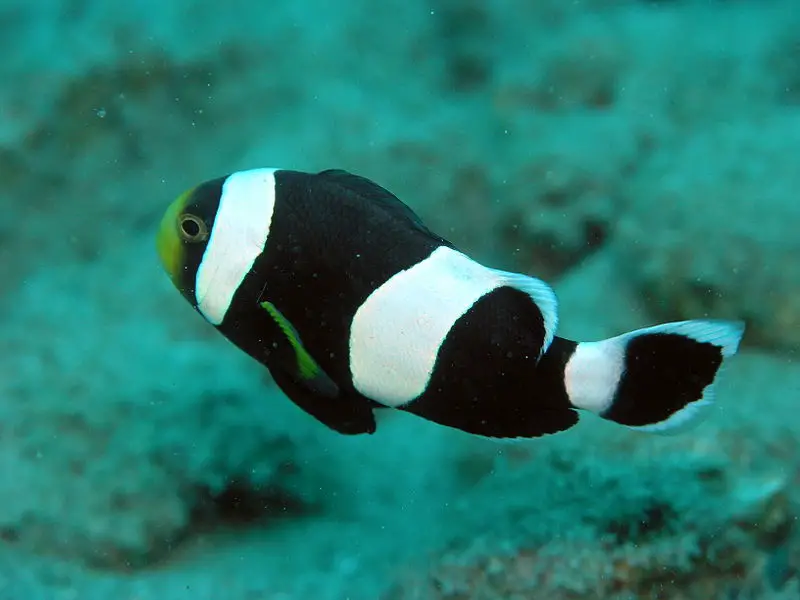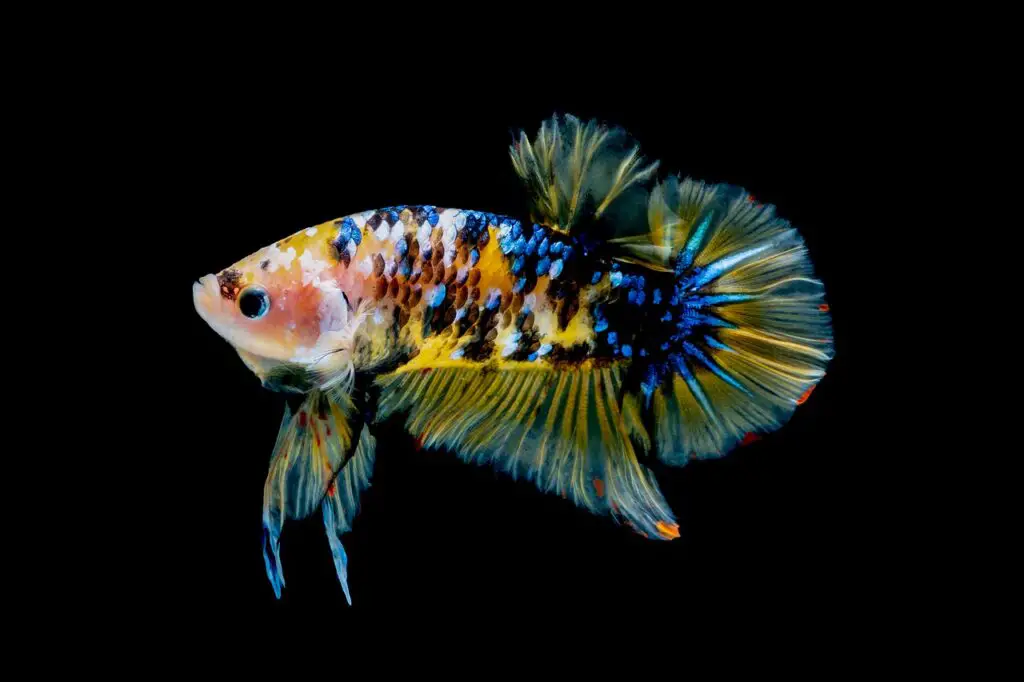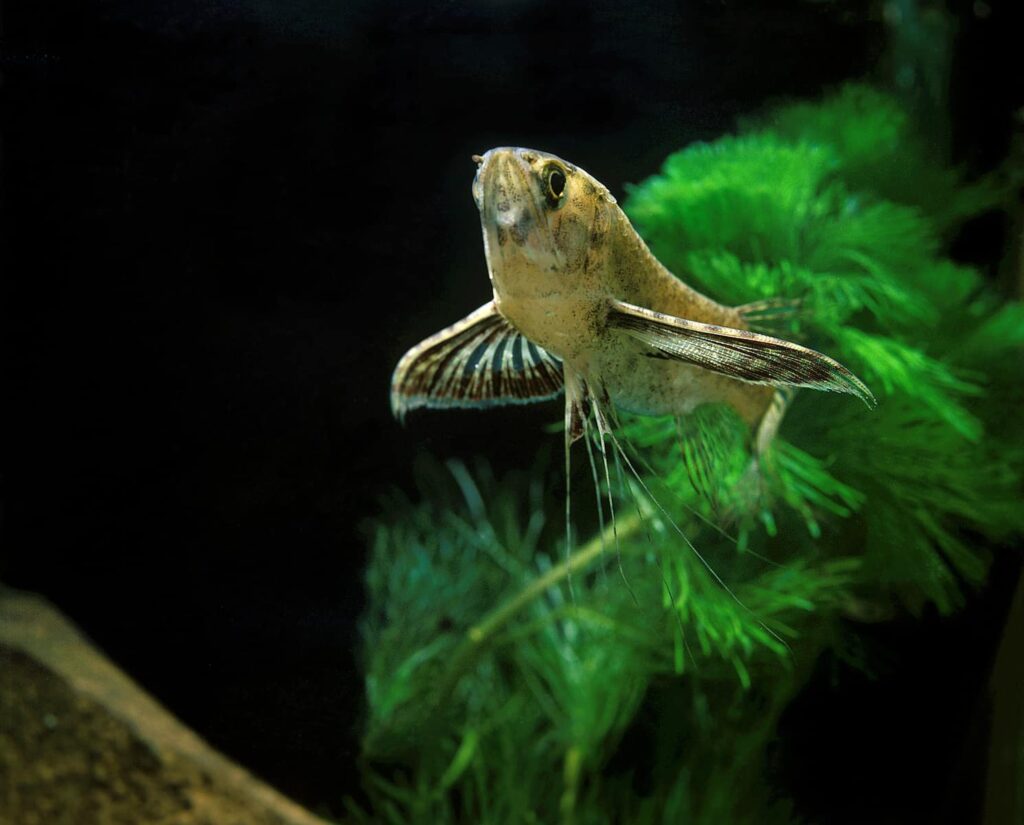Clownfish may turn black due to changes in diet or environment. Some clownfish in the wild are just naturally black, so these color variants are perfectly normal.
In the rest of the article, we are going to look at why your clownfish might be losing its color, how black clownfish exist in nature, whether black clownfish are aggressive, where these black clownfish live, and whether there are any blue clownfish.
Why Is My Clown Fish Losing Color?
The biggest reason for clownfish to lose their vibrant colors is a diet that is not suitable for these hues. In the wild, clownfish coexist with host anemones that have been shown to affect their coloring. You may not have one with your clownfish in your aquarium, which means these specific color-enhancing nutrients will need to be part of the food you feed it.
Other factors that could lead to your clownfish changing color are to do with its environment in the aquarium. Make sure that your aquarium has enough oxygen in the water, the pH levels are appropriate, and that the water is warm enough to troubleshoot the issue of your clownfish’s color fading.
Are Black Clownfish Natural?
There are clownfish that exist in the wild that are just naturally black. The Black Ocellaris is, as the name implies, all black with just white bands and is the most common example. This fish is not its own species, but rather a member of the Amphiprion ocellaris species, also known as the Common Clownfish.
The interesting thing about these black variants of this species is that the colors they happen to be are actually dependent on where they are found. This indicates that there may be a significant genetic variation between them and their fellow clownfish of the same species that have the more traditional colors that we are so used to, though correlations with the host anemone have also been found.
Amphiprion ocellaris is not the only species that has these naturally occurring almost all-black fish. Plenty of other clownfish species include specimens that are at least an overwhelming majority black and have very little colors that are not neutral, although the Black Clownfish seems to be the only one that can have exactly zero non-neutral colors.
Other clownfish species that can be naturally mostly black include the Sebae Clownfish, the Saddleback Clownfish, and the Wide-Band Anemonefish, all members of the Amphiprion genus. Even so, these are not the only examples, as this manifestation of colors is relatively widespread throughout this genus.
Are Black Clownfish Aggressive?
In spite of plenty of conventional wisdom borne of anecdotes, clownfish that are black are not any more aggressive than similar clownfish who aren’t. Individual clownfish will have different personalities, so there is a chance you may end up with a mean black clownfish, but this is not because of its color, and you have just as much chance of having an aggressive orange clownfish.
Ironically, the Common Clownfish species, which is the species that the Black Ocellaris belongs to, is famous for how relatively peaceful they are in aquariums, which is why they make such common pets. This temperament carries over throughout the entire species and has no connection to the color, as with species that are aggressive, however black or colorful they may or may not be.
Remember that clownfish as a whole are territorial because of their relationships in the wild with their host anemones, so some levels and manifestations of aggression are normal and to be expected. This cause of aggression, as with the other factors, is not linked to the color of the fish.
Where Do Black Clownfish Live?
Black clownfish that occur naturally tend to be linked to specific areas. Whether this is due to genetic variation or because of the host anemones, or rather the extent to which each factor is responsible, is still up for debate.
The Black Ocellaris, which we have already determined is the most appropriate example of a naturally black clownfish, is found in the oceans around Japan, Southeast Asia, and Australia. The variants are well documented. For example, the Darwin Ocellaris is all jet black with only white stripes and is found around the city of Darwin, Australia.
The Wide-Band Anemonefish, which is dark brown to black and only has blue markings along the edges of its ornamentation to represent non-neutral colors, is found in the subtropical parts off of Australia’s east coast.
With Saddleback Clownfish, their colors will change in response to their host anemone. The fish of this species that are associated with the Heteractis crispa species of anemone are the ones that are more likely to be black. This anemone is found in a broad range throughout the Indo-Pacific.
Is There A Blue Clownfish?
There are no clownfish in existence that are all blue or even majority blue, but there are some species of clownfish that have blue coloring to them. This blue is never in the core part of the clownfish’s coloring, and will instead be found on the bands or on the edges of features.
The most striking example of a naturally occurring blue clownfish is the appropriately named Blue stripe Clownfish. This species has bands that are all blue instead of white, making for an interesting contrast with the normal orange that appears alongside it.
Another example, as mentioned earlier, is the Wide-Band Anemone fish, which has a blue trim along its white bands and blue markings on the face. The brightness of this species’ blue markings makes for great contrast when most of the rest of them is orange.
A subtler example of clownfish with naturally occurring blue markings is in the Yellowtail Clownfish. This species has immense variation in the coloring that appears on it, so naturally, blue markings sometimes show up as well. When it occurs, the blue appears along the edges of the white bands.
Breeders have been attempting to selectively breed a much more blue clownfish, and while there have been some degrees of success along the process, the final result has not yet been achieved. We may, however, see clownfish that are majority blue in coloring in our lifetimes.



